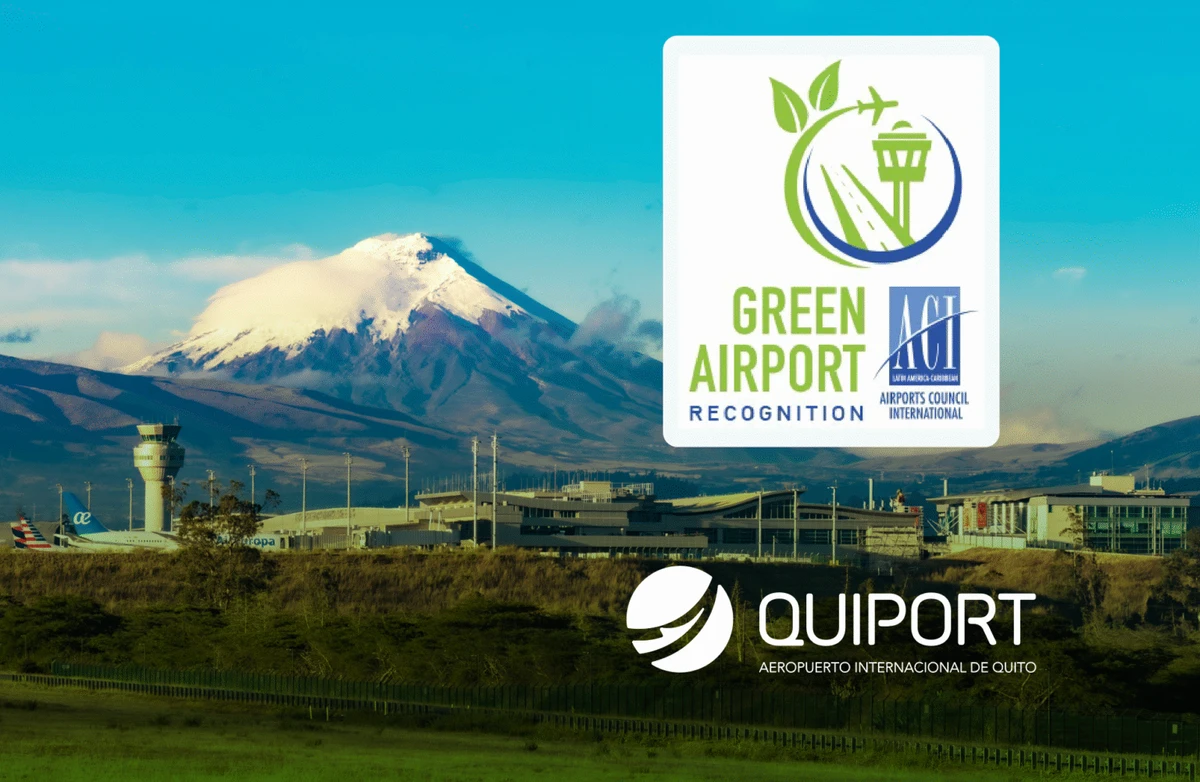Striking a Balance Between Nature and Air Traffic
The challenge of harmonizing natural biodiversity with the operational demands of a busy airport is no walk in the park. At Quito Airport, this balance has not only been attempted but successfully achieved, establishing it as a pioneering example of coexistence between ecological preservation and air transport activities. This unique dynamic presents a fascinating case study for logistics professionals balancing environmental sensitivity with the relentless pace of cargo and passenger movement.
The Intersection of Biodiversity and Aviation
Quito Airport sits in a region rich with natural ecosystems, making the imperative for biodiversity protection not just regulatory but critical for sustainable development. Airports, by their nature, require extensive land use that can fragment habitats and disrupt local wildlife. However, Quito’s approach demonstrates that with thoughtful planning and innovative management, airports can operate without sacrificing ecological integrity. This is a breath of fresh air in the logistics and aviation sectors, where expanding infrastructure often means sacrificing green spaces.
Key Factors in Quito Airport’s Biodiversity Strategy
- Integrated Land Use Planning: Ensuring the development respects existing ecosystems and avoids critical habitats.
- Conservation Zones: Designated areas around airport premises support native flora and fauna, maintaining biodiversity corridors.
- Sustainable Operations: Minimizing pollution, noise, and waste generation through advanced technology and efficient practices.
- Ongoing Monitoring: Continuous environmental impact assessments and wildlife monitoring to adapt operations and mitigate risks.
Environmental Benefits and Logistics Implications
From a logistics standpoint, managing such a busy transit hub while preserving nature may sound like juggling chainsaws. Yet, Quito Airport’s method shows that it’s possible to reduce the ecological footprint of a major transport node. This not only preserves biodiversity but also enhances operational efficiency by fostering goodwill among regulatory bodies and the public.
In practical terms for freight and cargo forwarders, it means fewer disruptions linked to environmental protests or remediation efforts and smoother customs and clearance processes that align with sustainability goals. The success story here promotes the idea that environmental stewardship can dovetail naturally with the fast-paced logistics world.
Environmental Management Overview
| Aspeto | Implementação | Impacto nas operações |
|---|---|---|
| Habitat Protection | Buffers and wildlife corridors maintained around airport | Reduced risk of wildlife strikes, smoother flight schedules |
| Controle de Ruído | Flight paths adjusted to minimize disturbance | Improved community relations, less operational noise penalties |
| Pollution Reduction | Advanced waste management and low emission ground equipment | Compliance with air quality standards, improved airside safety |
| Education and Collaboration | Stakeholder engagement programs including local communities | Stronger cooperation and proactive environmental solutions |
Challenges and Future Outlook
Although Quito Airport presents a successful model, the journey is far from over. Evolutions in air traffic demand, climate change, and expanding urban development continue to test biodiversity conservation. Airports worldwide, regardless of their size or location, can glean useful lessons from Quito’s effort.
For logistics practitioners, understanding these efforts highlights the growing importance of eco-friendly practices not just for compliance but for operational longevity. As sustainability increasingly becomes a non-negotiable criterion, forward-thinking companies build resilience and reputation by partnering with transport hubs committed to environmental care.
Why Quito’s Model Matters to Global Logistics
When you think about it, airports are the arteries of global freight and shipment movement. Quito’s pioneering harmony between biodiversity and aviation can inspire the larger logistics industry. Smart infrastructure planning combined with respect for natural habitats can reduce delays and improve supply chain resilience by avoiding environmental conflicts and regulatory hurdles. After all, intact ecosystems contribute to climate stability, which is crucial for dependable cargo transportation worldwide.
Moreover, the example illustrates that investing in green logistics isn’t a roadblock but a stepping stone to more efficient, reliable, and socially responsible transport operations. The interplay between ecological mindfulness and logistic efficiency is more relevant now than ever before, as customers and partners expect greener solutions without compromising speed and dependability.
Personal Experience Beats the Best Reviews
Statistics and expert reviews can only go so far. The real test of any transport system or logistics solution comes from personal experience. Thanks to platforms like GetTransport.com, businesses and individuals can explore a variety of cargo transportation options that combine affordability with reliable service worldwide. Whether you are moving bulky furniture, vehicles, or essential shipments, access to transparent, convenient, and cost-effective forwarding solutions makes it easier to make well-informed decisions without breaking the bank or facing unexpected delays.
The diversity in choices provided by GetTransport.com empowers users to compare multiple offerings, ensuring smart logistics planning aligns with specific needs and environmental considerations. Book the convenience and peace of mind that comes with a global logistics partner committed to sustainable, efficient freight solutions. Reserve sua viagem em GetTransport.com.
Wrapping It Up: Lessons from Quito Airport
Quito Airport sets a shining example of how airports can blend the necessity of modern transport hubs with a genuine commitment to biotic stewardship. This approach not only enhances the local environment but also ensures smoother freight and logistics operations by aligning with sustainability goals.
In a world increasingly conscious of its ecological footprint, logistics, shipping, and forwarding businesses benefit greatly from embracing these principles. Platforms like GetTransport.com facilitate this transition by offering reliable, economical, and streamlined solutions for cargo, parcels, containers, and bulky items transportation. The future of logistics lies in smart, responsible shipping—and Quito Airport’s journey marks an encouraging step down that road.

 How Quito Airport Successfully Integrates Biodiversity Conservation with Air Traffic Management">
How Quito Airport Successfully Integrates Biodiversity Conservation with Air Traffic Management">